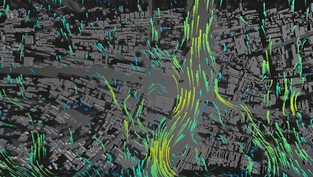Prasiolite State - Part 1 - Intensive Forces
- Chokoon

- May 18, 2019
- 2 min read
Updated: May 21
Project Title: Prasiolite State
Condition: Academic
Date: 05/2017
Prasiolite State, also known as the "Green Crystals of Bangkok," is a computational and ecological architecture project by Chulalongkorn University undergraduate Settawut Leenavong. The project investigates the morphology of crystal formation, exploring polygonal geometries and the intricate articulation of molecular joints.
The concept draws inspiration from prasiolite; green quartz crystals that naturally form within the gas cavities of volcanic rock. These formations are encased in a hard, protective shell that shields the interior from external physical disturbances. However, intangible forces such as geothermal heat penetrate the rock, catalyzing a chemical transformation that gives rise to vibrant, one-of-a-kind crystalline structures. This natural phenomenon becomes a metaphor for architectural resilience and transformation; an interplay between protective enclosure and internal evolution.

The project aims to quantify environmental data in order to identify disparities within the architectural design experience; insights that may hold significant implications for contemporary design methodologies. It further explores the integration of emerging technologies throughout the design and construction process, including real-time environmental sensing, computer-aided design, and digital fabrication techniques. Together, these tools form a cohesive, intelligent design system that supports innovation and responsiveness in modern architectural practice.
The project begins with site-specific data collection, focusing on capturing intangible environmental values through sensor-based analysis. Utilizing Arduino hardware equipped with devices such as the MQ-7 and AM2302 sensors, the system measures carbon monoxide (CO) emissions and humidity levels. The collected data is then transferred into spreadsheets and integrated into 3D modeling software, where it is compiled and analyzed to inform and guide the subsequent phases of the design process.
Site wind flow analysis; Intensity and directions by altitude

An intensive environmental force analysis of the site plan reveals gradients of carbon monoxide concentration, ambient noise levels, heat radiation, temperature, humidity, and wind intensity across Bangkok’s Sathorn district, an area situated within one of the city’s most congested urban bottlenecks.
The analysis of the collected data enabled the identification of zones within the city that exhibit high levels of carbon monoxide exposure. It also highlighted variations in wind flow and natural ventilation, which correlate with areas of concentrated gas accumulation. Additionally, the ambient noise readings revealed specific regions where acoustic disturbances may significantly impact the quality of life for local residents, indicating a need for mitigation strategies within the urban fabric.
Read Part 2:








































Comments